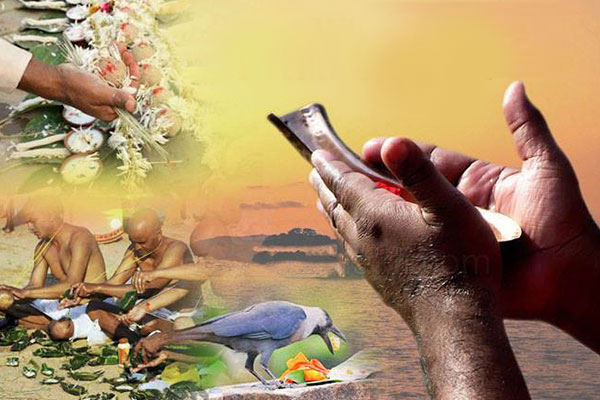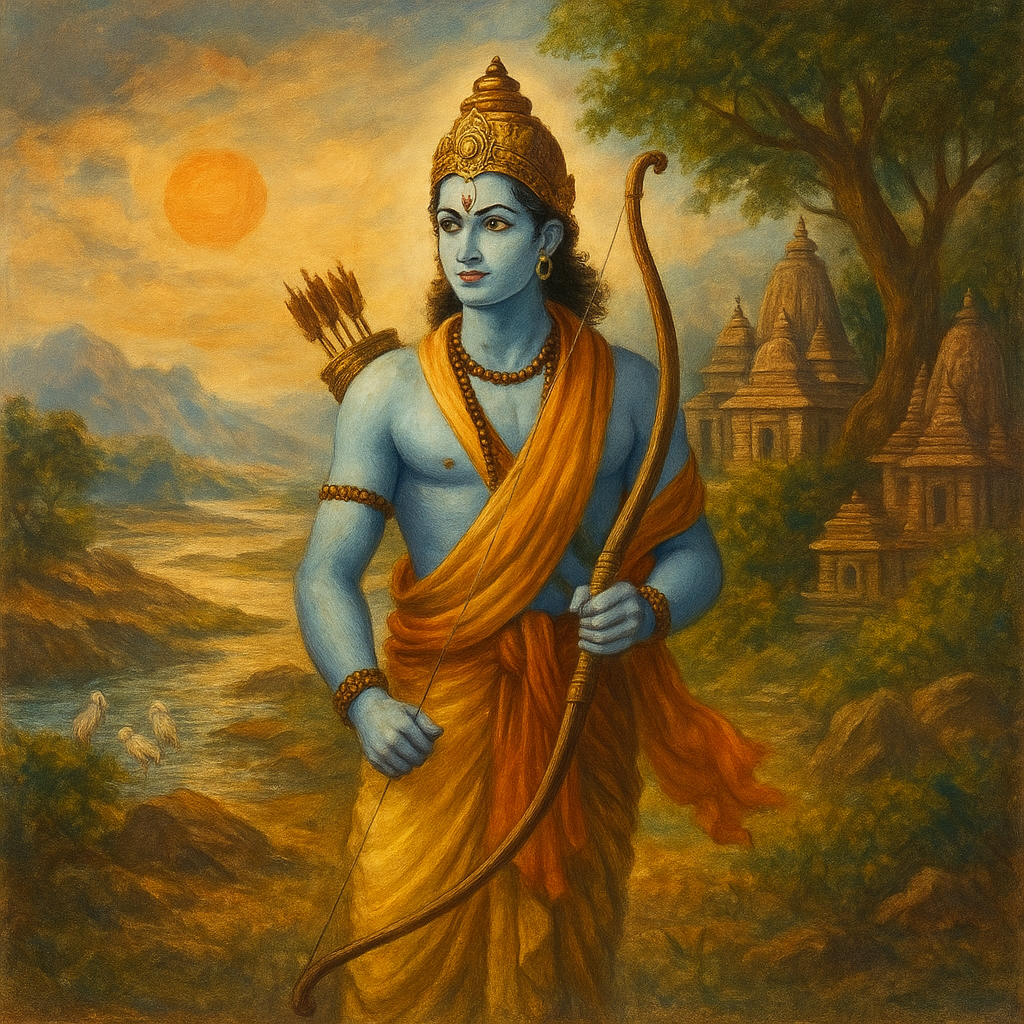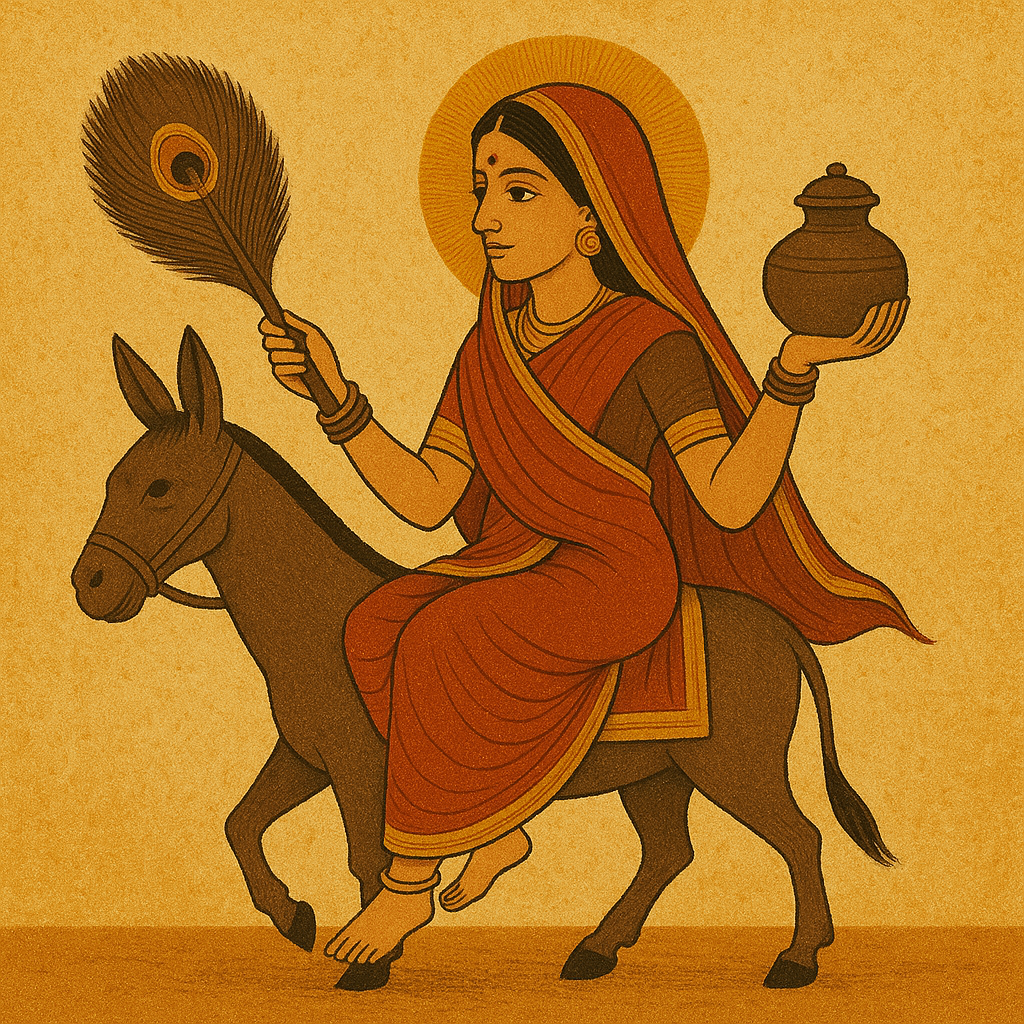Bhishma Ashtami is observed on the Shukla Paksha Ashtami of the month of Magha and marks the day when Bhishma Pitamaha, one of the greatest warriors and devotees of dharma, left his mortal body during Uttarayana. This tithi is considered highly auspicious for performing tarpan, shraddha, and prayers to honour Bhishma and seek his blessings for righteousness, purity, and ancestral peace. Scriptures state that those who remember Bhishma on this day gain his divine protection and guidance on the path of duty and truth.
Who is Bhishma Pitamaha?
Bhishma Pitamaha, born as Devavrata, was the son of King Shantanu and Goddess Ganga. Known for his unmatched discipline and devotion to dharma, he took the legendary vow of lifelong celibacy and service to the Kuru dynasty, which earned him the name Bhishma -the one who made a terrible yet revered vow. Blessed with the boon to choose the moment of his own death, Bhishma became a symbol of strength, sacrifice, and righteousness. His wisdom shaped the events of the Mahabharata, and his final teachings continue to guide humanity even today.
Bhishma Ashtami date and time
Bhishma Ashtami on Monday, January 26, 2026
Madhyahna Time - 11:44 AM to 01:58 PM
Duration - 02 Hours 15 Mins
Ashtami Tithi Begins - 11:10 PM on Jan 25, 2026
Ashtami Tithi Ends - 09:17 PM on Jan 26, 2026
What is Bhishma Ashtami?
Bhishma Ashtami is the sacred day that commemorates the passing of Bhishma Pitamaha, which occurred on Magha Shukla Ashtami during Uttarayana, the auspicious period when the Sun begins its northward journey. Scriptures describe that those who leave their body in Uttarayana attain higher realms, and Bhishma—blessed with Iccha Mrityu (the ability to choose his death) chose this tithi to embrace liberation. Devotees observe Bhishma Ashtami by performing Ekodishta Shraddha, tarpan, fasting, and mantra chanting to honour his legacy, seek ancestral blessings, and strengthen their commitment to dharma.
Significance of Bhishma Ashtami

Bhishma Ashtami is considered a highly sacred day dedicated to honouring Bhishma Pitamaha, the embodiment of duty, sacrifice, and righteousness. According to scriptures, Bhishma attained his heavenly abode on this tithi during Uttarayana, the divine period believed to grant immediate liberation ( moksha ) to those who depart.
On this day, devotees perform tarpan, Ekodishta Shraddha, and holy baths to express gratitude for Bhishma’s unmatched dedication to dharma. It is believed that remembering Bhishma Pitamaha and performing rituals in his name helps remove Pitru Dosha, absolve past karmas, and bring blessings for progeny, purity, and spiritual upliftment. This tithi inspires devotees to walk the path of truth, self-discipline, and unwavering commitment to one’s duties.
Bhishma Ashtami Puja, Rituals And Mantra

Bhishma Ashtami is observed with sacred rituals that honour Bhishma Pitamaha and invoke blessings for righteousness, purity, and ancestral peace. Devotees perform the following rituals with devotion and discipline:
1. Ekodishta Shraddha
This special form of Shraddha is performed exclusively to honour Bhishma Pitamaha. Devotees whose fathers have passed away are eligible to perform this ritual, offering prayers for peace and upliftment of the departed soul.
2. Holy Bath (Bhishma Ashtami Snan)
A ritual bath is taken, ideally in the Ganga or any holy river, as it is believed to purify the body and mind. Offerings of til (sesame seeds) and rice are made during the bath.
3. Tarpan Rituals
Tarpan is performed on riverbanks to appease Bhishma and seek ancestral blessings. Devotees offer water mixed with black sesame seeds, flowers, and kush grass while chanting sacred prayers.
4. Fasting
Many observe a day-long fast on Bhishma Ashtami. The fast is broken after completing puja and offering arghya to Bhishma Pitamaha.
5. Offering Arghya
Devotees offer arghya with til, flowers, kush grass, and Ganga water, accompanied by the prescribed mantra. This arghya is believed to bring purity and divine blessings.
Bhishma Ashtami Mantra
“Vasunaamavtaraya Shantanoraatmajanaya cha
Argyam dadami Bhishmaya Aa Balabrahmacharine”
Meaning:
This mantra is chanted to honour Bhishma Pitamaha, the son of King Shantanu and the divine manifestation among the Vasus. It invokes his blessings for purity, strength, discipline, and the fulfillment of one’s dharma.
Mahabharata Parvas Related to Bhishma
Several important Parvas in the Mahabharata highlight Bhishma Pitamaha’s wisdom, role in the war, and spiritual significance. These Parvas provide deep insight into dharma, cosmic order, and the events of the Kurukshetra battle.
Jambukhandavinirmana Parva

This is the opening sub-parva of the Bhishma Parva and begins with the Pandavas and Kauravas agreeing to the rules of the Kurukshetra war. During this time, Veda Vyasa offered Dhritarashtra the boon of divine sight to witness the events of the battle, but Dhritarashtra declined. Instead, Sanjaya was granted the power to narrate the war in real time, marking the beginning of his detailed accounts in the Mahabharata.
Bhumi Parva

Bhumi Parva, part of the larger Bhishma Parva, offers a vivid description of Earth’s geography through Sanjaya’s narration. He describes rivers, mountains, landscapes, and ancient cities such as Manga, Masaka, Mandaga, and Manasa. This Parva also highlights the harmonious coexistence of Brahmins and Kshatriyas, and includes descriptions of lunar phases and their influence on sea tides.
Bhagavad Gita Parva

One of the most revered sections of the Mahabharata, the Bhagavad Gita Parva, contains Lord Krishna’s divine teachings to Arjuna. As the war begins under Bhishma’s command, Arjuna is overcome with sorrow at the thought of fighting his own kin. Krishna guides him on Karma Yoga, selfless action, and adherence to dharma. These teachings form the philosophical foundation of the Bhagavad Gita, offering timeless wisdom for humanity.
Bhishmayadha Parva

Bhishmayuddha Parva spans 82 chapters and narrates the events of the first ten days of the Kurukshetra war. It describes Bhishma’s unmatched prowess on the battlefield, his duels with Abhimanyu and Arjuna, and his role in shaping the early course of the war. By the ninth day, enormous destruction had taken place, and the Pandavas sought Bhishma’s guidance to defeat him. Bhishma revealed that he would not fight against a woman or anyone who appeared female. Thus, on the tenth day, he was placed before Shikhandi and voluntarily accepted defeat, choosing the moment to fall to the ground and await his departure during Uttarayana.
Benefits Of Bhishma Ashtami Vrat

Observing the Bhishma Ashtami Vrat is believed to bring powerful spiritual and ancestral blessings. As Bhishma Pitamaha was an embodiment of purity, self-discipline, and devotion to dharma, worshipping him on this day helps devotees cultivate these qualities in their own lives.
Key Benefits:
1. Blessings for Good Progeny
Bhishma Pitamaha is revered as a guardian of lineage, and performing the vrat helps couples seeking healthy and virtuous children.
2. Liberation From Sins
The vrat, along with tila tarpan, is believed to absolve devotees from past negative karma and purify the mind and soul.
3. Removal of Pitru Dosha
Offering tarpan and Shraddha on Bhishma Ashtami pacifies ancestors and helps reduce Pitru Dosha, leading to harmony and progress in life.
4. Blessings of Brahmacharya and Purity
As Bhishma was a lifelong celibate, performing rituals in his honour invokes qualities of purity, self-control, and spiritual strength.
5. Ancestral Peace and Protection
The rituals performed on this day ensure peace for departed souls and strengthen ancestral support for the devotee’s family.
Recommended Pujas & Ritual Services for Bhishma Ashtami
Shradh Puja / Pind Daan / Tarpan Puja for Peace of Departed Souls
This sacred ritual helps honour ancestors, bring peace to their souls, and strengthen family well-being by offering pind daan, tarpan, and prayers.
Buy Shradh Puja / Pind Daan / Tarpan Puja for Peace of Departed Souls
Tripindi Shradh Mahapuja at Trimbakeshwar
Performed at the holy Trimbakeshwar site, this powerful mahapuja helps resolve Pitru Dosha and invites peace and liberation for ancestral souls.
Buy Tripindi Shradh Mahapuja at Trimbakeshwar
Pitru Dosh Nivaran Puja at Prayagraj
This specialized puja at sacred Prayagraj focuses on alleviating Pitru Dosha and fostering harmony, prosperity, and spiritual upliftment for devotees and their families.
Buy Pitru Dosh Nivaran Puja at Prayagraj
Conclusion
Bhishma Ashtami is a sacred day that honours the virtues, discipline, and unwavering devotion of Bhishma Pitamaha. By observing vrat, performing tarpan, and offering Ekodishta Shraddha, devotees seek his blessings for purity, righteousness, good progeny, and ancestral peace. This tithi inspires individuals to walk the path of dharma and strengthens the spiritual connection with one’s lineage. Remembering Bhishma Pitamaha on this auspicious day is believed to bring protection, clarity, and divine grace into one’s life.


-in-Astrology.jpg)






.jpg)




Comments 0
Leave your thought here